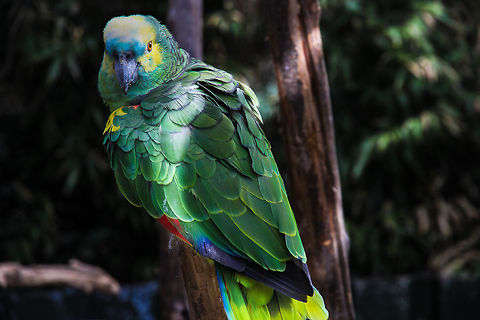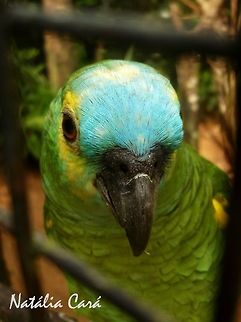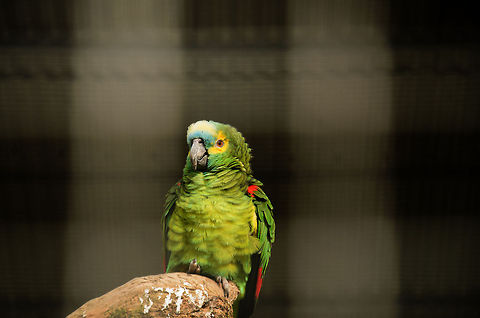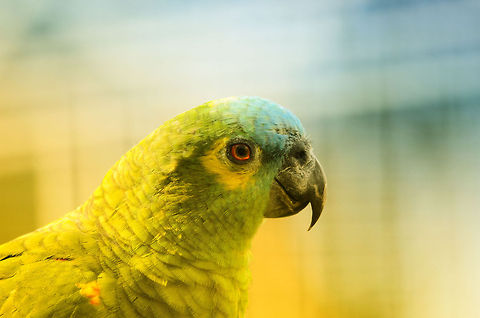
Appearance
The Blue-fronted Amazon is a mainly green parrot about 38 cm long. They have blue feathers on the forehead above the beak and yellow on the face and crown. Distribution of blue and yellow varies greatly among individuals. Unlike most other ''Amazona'' parrots, its beak is mostly black. There is no overt sexual dimorphism in plumage to the human eye, but analysis of the feathers using spectrometry, a method which allows the plumage to be seen as it would be by a parrot's tetrachromatic vision, shows clear differences between the plumage of the sexes. Juveniles of parrots are duller and have dark irises.
Distribution
The range of the Blue-fronted Amazon extends over eastern and northern Bolivia, eastern Brazil, Paraguay and northern Argentina. It is found in forests , woodland, savanna and palm groves.A small feral breeding population is also present in the greener regions of Stuttgart in Germany.

Status
The status of this species is evaluated as Least Concern by BirdLife International. However, while it remains common throughout a significant part of its range, there is evidence of a population decline, and this species has been heavily traded: Since 1981 when it was listed on CITES Appendix II, 413,505 wild-caught individuals have been recorded in international trade . Unfortunately, it is regarded as a crop pest in parts of its native range.Paradoxically, illegal trade may have contributed to expansions of the range of this parrot: It is becoming common in Rio de Janeiro, which is not a part of its historical range, something attributed to the escaping of captive individuals.

Habitat
The range of the Blue-fronted Amazon extends over eastern and northern Bolivia, eastern Brazil, Paraguay and northern Argentina. It is found in forests , woodland, savanna and palm groves.A small feral breeding population is also present in the greener regions of Stuttgart in Germany.

Reproduction
The Blue-fronted Amazon nests in tree cavities. The oval eggs are white and measure around 38 x 30 mm. There are usually three to five in a clutch. The female incubates the eggs for about 27 days and the chicks leave the nest about 60 days after hatching.
Cultural
The Blue-fronted Amazon is commonly seen as a pet, both in South America and other parts of the world. Their talking ability varies greatly from individual to individual, but some speak nearly as well as the Yellow-headed Amazon group mutation of the species appeared in captivity in 2004, bred by the psittaculturist, Howard Voren. The mutation results in yellow plumage being replaced by that of a red/pink hue and greens with a chocolate-brown, with the depth and intensity of colour varying by location upon the body.References:
Some text fragments are auto parsed from Wikipedia.